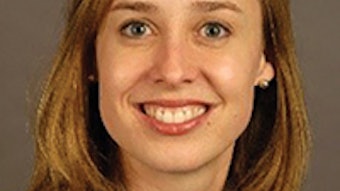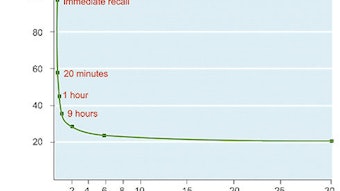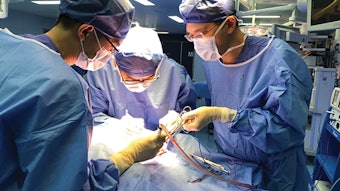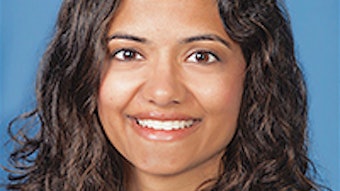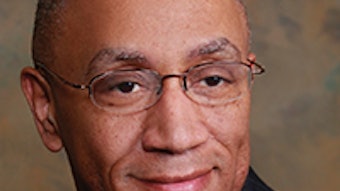Complex Dizziness for the General Otolaryngologist
Dizziness is a complex symptom that often frustrates patients and physicians alike. It can affect adults of all ages and contributes to a significant decrease in patient quality of life. There are numerous possible etiologies of dizziness and various organ systems that could potentially be involved. The peripheral vestibular system is one possible source of dizziness and, as such, otolaryngologists are often involved in the care of these patients.
James G. Naples, MD, Erika A. Woodson, MD, Syed F. Ahsan, MD, and Soha N. Ghossaini, MD
Dizziness is a complex symptom that often frustrates patients and physicians alike. It can affect adults of all ages and contributes to a significant decrease in patient quality of life. There are numerous possible etiologies of dizziness and various organ systems that could potentially be involved. The peripheral vestibular system is one possible source of dizziness and, as such, otolaryngologists are often involved in the care of these patients. One of the challenges in caring for these patients is that they have often seen multiple physicians by the time they make it to the otolaryngologist and do not have any specific diagnoses to explain their underlying problem. In this article, our team will review complex vestibular disorders commonly seen by the otolaryngologist, such as Ménière’s disease (MD), vestibular migraine (VM), persistent postural perceptual dizziness (PPPD), and superior semicircular canal dehiscence syndrome (SCD). We will highlight key diagnostic criteria that can aid in differentiating these disorders and simplify the approach to the complex dizzy complaint. The goal of this work is to provide a simplified framework for the general otolaryngologist to understand common dizzy disorders.
In recent years evidence has suggested significant overlap in symptomatology of MD and VM. Patients in both groups may experience symptoms of vertigo and headache of variable duration. In addition patients in both groups may complain of hearing loss and aural fullness. This overlap creates diagnostic challenges because the disorders are treated very differently, and there is often pressure from the patient to make a diagnosis at the initial visit, which can be difficult.
Despite these challenges, there are key factors in the history and work-up that can lead to more confident diagnosis. MD patients, for example, must have a documented sensorineural hearing loss (typically low-frequency) before definite diagnosis can be confirmed.1 While patients with VM can also present with hearing loss, the hearing loss does not fluctuate as in MD. Migraine symptoms can often be elicited from the history by asking a few specific questions about a personal or family history of migraine and additional, non-vertiginous migraine symptoms such as photo- or phonophobia.
Specific criteria have been created for the diagnosis of definite and possible VM by The Bárány Society and International Headache Society.2 One of the key points in the diagnostic criteria for definite VM is that headache or associated symptoms (photophobia, phonophobia) should be present in at least 50% of vestibular/dizzy episodes and patients need to meet International Classification of Headache Disorders criteria for migraine. One common finding in patients with VM that helps to differentiate it from MD is that dizzy symptoms are of variable characteristics and duration. For example, symptoms of VM may be vague (lightheadedness, imbalance, fogginess) and patients may report that symptoms last anywhere from minutes to several days.
It is important to allow patients the opportunity to describe their symptoms because it can help guide physicians to the diagnosis. For example, giving the patient time to articulate whether they have headaches, tinnitus, or aural fullness before asking specifically may support one diagnosis over another. Unfortunately, vestibular testing typically fails to clarify diagnostic dilemmas in MD and VM. This is not to say that vestibular testing is not indicated; however, reliance on test results may lead to confusion. Ultimately, diagnostic criteria for MD and VM are largely based on history, hearing status, and a detailed yet efficient evaluation. It is important to keep in mind that some patients may meet criteria for both diagnoses and require management of both disorders.
While MD is a disorder that most otolaryngologists are familiar with, there is an emerging disorder of the vestibular system that our specialists should gain familiarity with. The disorder is called persistent postural perceptual dizziness (PPPD)—or “Triple PD” (not to be confused with BPPV). Triple PD, formerly called chronic subjective dizziness, is a complex disorder that is thought to involve the peripheral vestibular system, the central nervous system, and the visual system. And like many disorders that cause dizziness, it is associated with anxiety and depression. The underlying pathophysiology is not fully elucidated; however, it is thought that there is overreliance on visual/somatosensory stimuli for spatial orientation. Often, there is a specific vestibular-related event that “precipitates” the onset of PPPD by causing maladaptation of the system that integrates afferent vestibular information. For example, PPPD onset may occur after an episode of vestibular neuritis. Patients with PPPD will often describe symptoms of “persistent” imbalance, dizziness, or non-spinning vertigo when upright or “postural.” The key criteria for diagnosis are 1) Persistent (> 3 months of daily symptoms), 2) Provoked by upright posture, motion, or visual stimuli, and 3) Precipitated by conditions that cause dizziness.3 Like MD and migraine, PPPD is diagnosed largely by history, and testing does not often demonstrate specific findings on work-up. Therapy is often multimodal and requires vestibular therapy combined with medical and psychological management of comorbid psychiatric disorders. Ultimately, this disorder is something that most otolaryngologists may see, and recognition of the problem will facilitate return to functioning for the patient.
The final disorder to review is superior semicircular canal dehiscence syndrome (SCD). It is amazing to think that a novel syndrome was recently identified in 1998 by otolaryngologist Lloyd B. Minor, MD.4 It seems like it has been a part of our specialty for much longer. Since that time, SCD has become a well-recognized syndrome, but it is important to reinforce the disorder that it is considered a syndrome when symptoms and findings coincide. Radiographic findings of superior canal dehiscence in the absence of symptoms does not constitute the syndrome. Common symptoms include sound- and pressure-induced dizziness as originally described by Dr. Minor. Autophony, pulsatile tinnitus, and aural fullness are also common. As far as diagnostic work-up is concerned, CT of the temporal bones is essential, but the challenge is in interpreting diagnostic vestibular testing. The most relevant vestibular test is cervical-evoked myogenic potential (cVEMP), which should have a reduced threshold for the affected ear. This is due to the “3rd window” caused by the dehiscence. While other tests such as ECoG have been applied in the evaluation of SCD, they are not as clinically useful and may lead to confusion. Ultimately, it is important for the otolaryngologist to keep in mind that the diagnosis of SCD syndrome requires symptoms, radiographic findings, and abnormal cVEMP. Understanding this should guide decision-making about whether there is an indication for repair of the dehiscence.
We have tried to simplify four very complex vestibular disorders in just a few simple paragraphs. While we reference diagnostic criteria for MD, VM, and PPPD, we recognize that the clinical picture may not always be as clear. Nonetheless, we feel it is important to recognize how diagnostic criteria, in addition to a detailed history, can be used to diagnose these disorders. Additionally, we emphasize that the combination of symptoms and imaging/cVEMP findings constitute SCD syndrome. We hope that this article will simplify understanding of a complex complaint and ultimately lead to a more fulfilling experience for the patient and otolaryngologist.
Presented at the AAO-HNSF 2019 Annual Meeting & OTO Experience in New Orleans, LA
References
- Lopez-Escamez JA, Carey J, Chung WHet al. “Diagnostic Criteria for Meniere’s Disease.” J Vestib Res 2015; 25:1-7.
- Lempert T, Olesen J, Furman Jet al. “Vestibular Migraine: Diagnostic Criteria.” J Vestib Res 2012; 22:167-172.
- Staab JP, Eckhardt-Henn A, Horii Aet al. “Diagnostic Criteria for Persistent Postural-Perceptual Dizziness (PPPD): ConsensusDocument of the Committee for the Classification of Vestibular Disorders of the Barany Society.” J Vestib Res 2017; 27:191-208.
- Minor LB, Solomon D, Zinreich JS, Zee DS. “Sound- and/or Pressure-Induced Vertigo Due to Bone Dehiscence of the Superior Semicircular Canal. Archives of Otolaryngology–Head & Neck Surgery 1998; 124:249-258.

